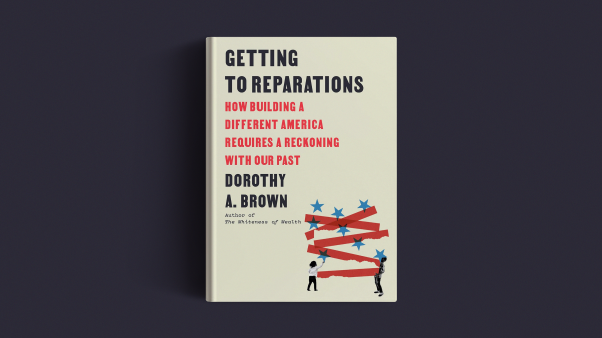I open my Bible to 1 Peter 2:8: “A stone that causes people to stumble and a rock that makes them fall.” By “open,” I mean I get out my phone, tap on the Bible icon, and type the verse in a search bar.
With another tap I can underline the sentence if I want. Highlight it. Snip and save it into another file to reflect on, sans context, at some later date. In my Bible app, there’s also a little gray box that looks like a speech bubble from a comic strip, and if I tap on that, it opens up to show me a reference: Isaiah 8:14. It’s not hyperlinked to that verse, so instead of jumping to the prophet, I’m encouraged by the tech in my hand to close the box and keep reading 1 Peter: “They stumble because they disobey the message.”
As we enter into a third decade of what literary critic Sven Birkerts has called “reading in an electronic age” and biblical literacy reaches new lows, what impact does this tool have on Bible reading? How does it shape our interpretations?
There is a long debate about the correct understanding of sola scriptura. But no heir of the Reformation has ever taken it to mean we should read Scripture without any outside help. Protestants, in fact, have historically embraced innovations that might increase engagement and comprehension, from common-language translations to study Bibles, commentaries, illustrated editions, and abridgments, not to mention smartphone apps.
You don’t have to harbor deep suspicions of progress, though, to wonder if the tools we use to read the Bible might, in some way, reshape how we read. And if so, do they reshape it for the better, or the worse?
My own research on the history of dispensationalism suggests that our Bible-reading tools have, at times, changed our reading to such an extent they have even changed what it means to read the Bible literally.
There have been a variety of Christian views on what a literalist approach to Scripture should look like. Literal can refer to an emphasis on the inerrancy of the Bible; beliefs about the historicity of certain passages; a particular understanding of the fulfillment of prophecy (which would not be literally literal, but symbolic); or the view that a passage should be read in the plainest way possible and that’s why it’s important to understand genres and original reception. For dispensationalists, literal reading relied on “word chains”—connecting verses through the “links” of word usage and treating keywords like stone the same wherever they were found in the Bible. That approach to the text wouldn’t have become popular without the development of concordances.
 Illustration by Michał Bednarski
Illustration by Michał BednarskiLet me back up: Bible concordances date to the 13th century, when 300 Dominican monks under the leadership of Hugh of Saint-Cher produced a selective alphabetized index of the words they considered most important in the Latin-language Vulgate Bible. While it was a powerful reading tool for biblical scholars, the St. Jacques Concordance was rudimentary by today’s standards. Later Medieval concordances listed every occurrence of many, many more words.
With the Reformation came demand for similar works in vernacular languages. The first English-language New Testament concordance appeared in the 1530s, though it wasn’t very useful before the publication of the King James Bible in the 1600s made Scripture widely available.
The KJV got an excellent concordance in 1737 when Alexander Cruden, a bookseller and reclusive scholar, finished cataloging more than 77,000 words. It took him 26 years and several trips to a mental institution, but he finally finished and published his exhaustive masterpiece: Cruden’s Concordance. It remains in print today.
Cruden’s tool for Bible reading was often paired with other new aids, such as Bagster’s Polyglot Bible, which offered readers 60,000 cross-references in multiple languages printed side by side, and new commentaries such as Thomas Scott’s Commentary on the Whole Bible. All told, by the 19th century KJV readers had a lifetime’s worth of tools to help them understand the Bible in new ways.
These powerful new tools meant that regular readers could, for the first time, cross-reference any word in the Bible. The stone in 1 Peter could be connected with the one Moses struck in Exodus 17:6, the one Daniel described as being cut “not by human hands” in Daniel 2:34, and the one Jesus talks about falling on people and crushing them in Matthew 21:44. The cross-references created a new interpretive context, one that could be highly personal or communal, depending on how the tools were used.
In the United States, this approach to Scripture came to be called the Bible Reading Method. It democratized what was usually the purview of scholars or well-trained pastors. Readers could now select an English keyword to study and then examine all the uses of that word, extrapolating the meaning of a text from the compiled examples.
People often did this in groups, encouraging intensive Bible study that fed into theological reflections. A group might look at the word wait in Psalm 27:14, for example; connect it to Jacob’s plea in Genesis 49:18; cross-reference that with Paul’s eschatological hope in Romans 8:19, where “creation waits”; and then talk about how God’s deliverance is a deep theme running through the Bible from beginning to end. Who God was delivering and what that deliverance looked like could be shaped by the biblical context and narrative, but it was just as often conditioned by readers’ personal circumstances and their particular cultural assumptions.
The Scofield Reference Bible was a mainstay for millions of Christians steeped in the Bible Reading Method. It was very popular and widely distributed among some Christians. Cyrus I. Scofield, a minister closely associated with Dwight L. Moody, included in his reference Bible extensive footnotes explaining his theology, which relied on an intricate cross-reference and concordance system running down the middle of every page of the Bible. Oxford University Press published Scofield’s Bible for the first time in 1909, and it remains in print today. In addition to the on-page helps, Scofield included a 150-plus-page concordance index and instructions to train readers to build word chains. He explained that word chains would “lead the reader from the first clear mention of a great truth to the last.” And in case the reader didn’t get it, a Scofield summary would solidify the meaning at that last reference.
In its more sophisticated implementation, reading the Bible with the help of concordances allowed people to experience the unity of Scripture. As another dispensationalist writer in the early 20th century, Isaac Massey Haldeman, explained, “an intelligent and satisfactory study of the Bible” required a concordance to realize that a “unity of design” animated the 66 books. Concordances allowed lay readers to experience Scripture’s unity, even as they downplayed or set aside historical context, human authorship, the original languages, linguistic details, and often the actual narrative.
Some conservative Christians, such as Moody’s colleague R. A. Torrey, called the Bible Reading Method the “scientific” approach to Scripture. Haldeman described concordances and cross-references as “implements” and “tools” which, if used properly, produced repeatable results.
It’s unusual, today, to think of self-described fundamentalists touting science, but Americans at the turn of the 20th century were embracing science as the ultimate arbiter of truth across all sectors of life. As biblical higher criticism seemed to undermine the authority of Scripture in academia, this concordance-based interpretive frame was deployed to shore it up, scientifically.
We might expect fundamentalists who wanted to read the Bible literally to care more about how the first Christians received Scripture. But the tool they were using for their Bible reading pushed them in this other, “scientific” direction instead.
It also prepared the ground for a new theological movement, which came to be called “dispensationalism.” This developed out of the teachings espoused by the Exclusive Brethren—specifically the Anglo-Irish leader John Nelson Darby. He taught that humanity was divided into three parts: Israel, the church, and the nations. The nations didn’t have a covenant with God, but the church and Israel both did, so Scripture needed to be “rightly divided” into the parts that spoke to Israel and the parts that spoke to Christians.
For Darby, what made “every scripture fall into place” was a Christian reader’s “spiritual understanding by the Holy Ghost of things in heaven and our connection with them, and things in earth and our separateness from them.”
That approach to the Bible often focused on prophecy, a genre of Scripture Darby didn’t think was aimed at its original recipients, but future-oriented, predicting events that had not happened yet in human history, mostly having to do with Israel. To understand Scripture, then, you would want to know how a stone could be a foundation (Eph. 2:20), a stumbling block (Rom. 9:32–33), and something that would fall on people and crush them (Matt. 21:44), and how all of those were both actually Jesus and a sequence of events that was going to happen (literally/symbolically) to Israel.
Darby promoted concordances, but he was a stickler for keeping separate “earthly” and “heavenly” meanings of particular verses. This complicated the Bible Reading Method that was in vogue among the American Christians most eager to adopt Darby’s teachings.
Americans not steeped in the same Brethren assumptions insisted that Darby’s distinctions could be discovered from the Bible Reading Method itself. As James Brooks, one of Darby’s most important American popularizers, assured readers, “the language in which prophecy is written is as simple and as easy to understand as any other part of Scripture.” Concordances, which catalogued words and not meanings, were part of what made that seem true.
The largely American story of dispensationalism’s development after Darby shows how later readers tried to base his teachings in a plain reading of the text to bring them more in line with the Bible Reading Method. But the “plain” reading doesn’t appear so plain, of course, without the technology that encouraged people to read that way.
After several generations of outside scholars chipping away at dispensationalism, and popular dispensationalism like the Left Behind novels undercutting its credibility, that approach to the Bible has largely fallen out of favor. Dispensationalism is in decline, and the Bible Reading Method is not often taught in seminaries or Christian colleges.
Yet the reading instincts popularized by the Bible Reading Method persist. The practice continues to have a powerful effect on people. It still makes readers feel as if Scripture is opening up, as if they see into the obscurities of the Bible for the first time and there’s no need for specialized language or historical training. With a little practice and a concordance, every reader can do it themselves, and they can even claim this is the way to read the Bible literally.
And concordances still exist, of course. They’re valuable tools that we often take for granted. They can be amazingly helpful to reading the Bible when used properly. They’ve largely been replaced by more efficient tools for regular Bible readers. I can do a word search on my app or, perhaps, click on a link that jumps me from one part of the Bible to another.
That way of thinking about the Bible—as a hyperlinked text—really excites the popular Canadian psychologist Jordan Peterson. In one of his YouTube lectures on the Bible, he shared a graphic created by computer scientist Chris Harrison, showing the more than 65,000 cross-references in Scripture. Peterson marveled that if you followed each one, “You’d just journey through that forever. You’d never, ever get to the end of it.” What insights that journey would produce, however, would be entirely dependent on the path one chose to take. This endless variety is appealing to Peterson, but it should be less compelling to Christians committed to the unity and coherence of Scripture.
In an age of limitless digital tools to derive new meanings from Scripture, we should be cautious about how our reading technology shapes and reshapes the context of the text. We do not read Scripture solo, to be sure, but the tools we choose can shape and misshape our reading of the Bible. They can lead us to believe we’re reading simply and literally when, with a little critical distance, it certainly looks like a process of breaking and remaking contexts to fit our systems.
I don’t think that’s what happens when I tap open my Bible app. The technology feels more neutral than that. But history would suggest it is something to worry about.
Daniel G. Hummel is the author of the forthcoming book The Rise and Fall of Dispensationalism: How the Evangelical Battle Over the End Times Shaped a Nation (Eerdmans).












